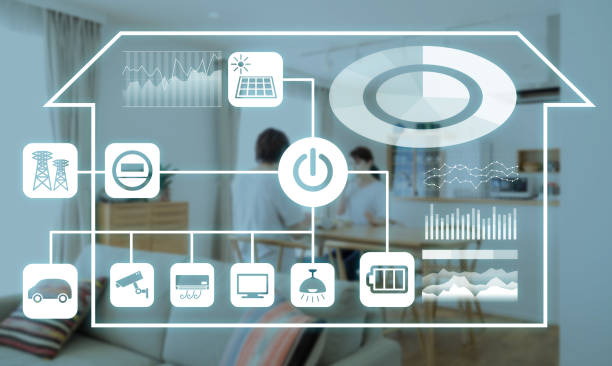
In the modern era, the Internet of Things (IoT) has opened doors to unprecedented possibilities, and one of its remarkable applications is remote surveillance.
Imagine being able to monitor your home or business from anywhere in the world using IoT technology.
This article delves into the step-by-step process of setting up a remote surveillance system using IoT, empowering individuals and businesses with enhanced security and peace of mind.
Understanding the Potential of Remote Surveillance with IoT

Accruent says remote surveillance allows you to monitor and manage your premises without being physically present.
By harnessing the power of IoT devices, you can keep a watchful eye on your property, loved ones, or assets from the convenience of your smartphone or computer.
1. Choosing the Right IoT Devices
Selecting the appropriate IoT devices is crucial for a successful remote surveillance system.
From security cameras and motion sensors to smart doorbells, each device plays a unique role in ensuring comprehensive surveillance coverage.
2. Selecting a Secure Communication Protocol
According to ScienceDirect, Communication between IoT devices and your monitoring platform must be secure to prevent unauthorised access. Opt for protocols like HTTPS or MQTT with strong encryption to safeguard your data.
3. Setting Up IoT Devices
Installation of IoT devices involves strategically placing cameras, sensors, and other devices to ensure optimal coverage.
Proper positioning ensures that critical areas are under surveillance and potential blind spots are minimised.
4. Connecting to a Centralised Hub or Cloud Platform
IoT devices often connect to a centralised hub or a cloud platform that facilitates data storage, real-time monitoring, and remote access.
This hub acts as the command centre for your surveillance system.
5. Configuring Alerts and Notifications
Configure alerts and notifications to receive instant updates in case of suspicious activities.
These alerts can be sent via email, text messages, or mobile app notifications, ensuring timely response to potential security breaches.
6. Remote Monitoring and Control
With your IoT surveillance system up and running, you can remotely monitor and control it through dedicated apps or web interfaces. Real-time video streams, access to recorded footage, and the ability to activate/deactivate sensors enhance your control over the system.
7. Ensuring Data Privacy and Security
Cloudian cited that protecting the privacy of your surveillance data is paramount.
Implement strong security measures such as unique passwords, multi-factor authentication, and regular firmware updates to keep potential hackers at bay.
8. Integrating with Other Smart Home Devices
To create a comprehensive smart home ecosystem, consider integrating your surveillance system with other IoT devices like smart locks, lights, and thermostats. This enhances overall security and convenience.
9. Maintenance and Ongoing Monitoring
Regular maintenance and monitoring ensure the continued effectiveness of your remote surveillance system.
Check for device malfunctions, update software, and fine-tune settings to adapt to changing circumstances.
Okay my dear readers, now let us look into frequently asked questions about How to set up a remote surveillance system using IoT.
How can I establish a remote surveillance system using IoT?
Set up IoT cameras with internet connectivity. Configure them to transmit data to a central hub, enabling remote monitoring.
What advantages does an IoT-based surveillance system offer?
IoT enhances real-time monitoring, remote access, and alerts for security breaches. It’s flexible, scalable, and offers data-driven insights.
Do I need extensive technical knowledge to deploy IoT surveillance?
Basic technical knowledge helps, but user-friendly IoT solutions are available, simplifying the setup process for users of various expertise levels.
How do I ensure data security in an IoT surveillance system?
Prioritise encryption and secure authentication protocols for data transmission. Regular software updates and strong passwords are crucial.
Can I integrate existing surveillance cameras with IoT technology?
Yes, many IoT solutions are designed for integration with existing cameras, maximizing your investment while adding remote capabilities.
What challenges might I face when setting up IoT surveillance?
Connectivity issues, data privacy concerns, and potential hacking risks require careful planning and adherence to security best practices.
What’s the future of IoT in remote surveillance?
IoT will continue evolving with advanced sensors, AI-enhanced analytics, and improved data security, revolutionising remote monitoring capabilities.
Conclusion
In conclusion, the advent of IoT has brought about a new era in security—remote surveillance that transcends physical boundaries.
By strategically selecting IoT devices, securing communication protocols, setting up devices, and configuring alerts, you can establish a robust remote surveillance system.
With real-time monitoring, access control, and integration capabilities, this technology empowers individuals and businesses to safeguard their spaces efficiently.
As we embrace the IoT-driven revolution in security, we’re not just enhancing protection; we’re embracing the future of vigilance.
Creating a remote surveillance system using IoT is more than a technological endeavour—it’s a step towards securing what matters most.
In a world where connectivity reigns, our ability to watch over our surroundings is no longer confined by distance.
With IoT as our ally, we can truly be present even when we’re far away.








